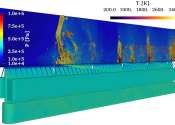Why AI can't replace air traffic controllers
After hours of routine operations, an air traffic controller gets a radio call from a small aircraft whose cockpit indicators can't confirm that the plane's landing gear is extended for landing. The controller arranges for ...
Jan 31, 2024
0
2









